One of the biggest news stories over the last month has been the continuous eruption of the Kilauea volcano on the big island in Hawaii. Now Kilauea has actually been quietly erupting for the past fifty years but recently the amount and intensity of the lava flow has increased by more than an order of magnitude.
More than twenty new fissures of the volcano have opened destroying hundreds of homes. At the same time, although no one has been reported to have died thousands of people have been forced to flee to safety. The images below show some of the power of the Kilauea volcano.
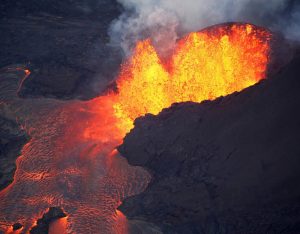
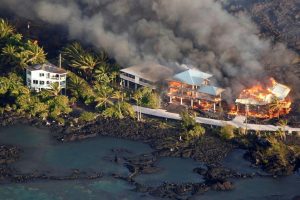
Now just four days ago in the Central American nation of Guatemala the Volcan de Fuego, that’s Spanish for the Volcano of Fire, erupted sending a torrent of hot ash and mud through surrounding villages. This landslide of material is technically known as a pyroclastic flow and is the same phenomenon that buried the ancient Roman town of Pompeii.
Within minutes of the eruption in Guatemala hundreds were either dead or missing and thousands left homeless. The images below show some of the destruction cause by the Volcan de Fuego.
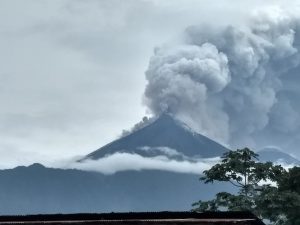
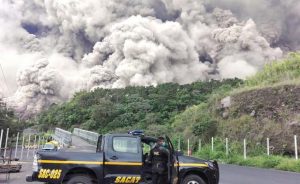
So what’s the difference here? The power of both volcanoes is inexorable; all that we humans can do is just run away until the volcano calms down as they always do. Still the lava flow from Kilauea has been steady, measured. So much so that you can almost walk to safety.
The ash flow from de Fuego however was like a tsunami, so fast that many people were engulfed before they knew what was happening, so fast that cars sometimes could not keep ahead of it.
The volcanic material from the two volcanoes even looks completely different. The lava from Kilauea is the classic molten red liquid that cools to a pitch-black hard rock. The material from Volcan de Fuego on the other hand is a gray powder that coats and chokes everything. The images below show the differences in the material coming from the two volcanoes.
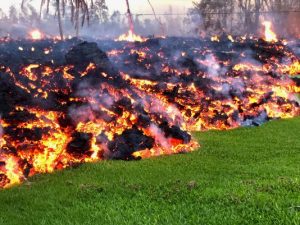
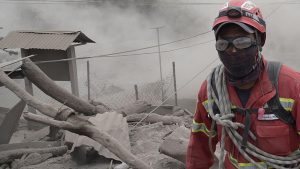
How can they be so different, they are both volcanoes aren’t they? Yes, they are both volcanoes but there are profound differences between them, and those differences can teach us a great deal about our planet. Kilauea is the simpler to describe and understand so I’ll start with it.
Kilauea, and all of the volcanoes that formed the Hawaiian island chain sit on a hole in the Earth’s crust that allows material from deep down to rise to the surface. Technically known as a ‘Hot Spot’ this hole reaches into the mantel, or even deeper, where the material is both hotter and more thoroughly mixed. Because of this smooth consistency volcanoes like Kilauea do not get clogged, they tend to spew out some lava all of the time.
Another thing to remember about Hot Spots is that they don’t move with the Earth’s tectonic plates. That’s how the Hawaiian island chain was formed as the Pacific plate slide across the Hot Spot forming new volcanoes, i.e. new islands as the plate shifted. So Kilauea is not caused by plate tectonics.
On the other hand Volcan de Fuego is a product of plate tectonics, it is directly generated by the movement of the North American plate over the Pacific plate. As the material of the Pacific plate is subducted beneath the North American it pushes upward spawning mountains and volcanoes. It is this mechanism that has produced the so-called ‘Ring of Fire’ around the Pacific Ocean. The image below illustrates how such a subduction zone works.

However the material that rises up through volcanoes like Volcan de Fuego doesn’t come up as consistently as it does from a Hot Spot. This means that these volcanoes can go dormant for years or even decades. During this dormancy the volcano dome and lava chamber can harden and when pressure again starts to build the dome becomes a cap and the pressure just builds until it explodes destroying everything for kilometers in a matter of minutes. This is what happened at Vesuvius in 86CE, at Mount St. Helens in 1980 and happened at the Volcan de Fuego this week.
Kilauea and Volcan de Fuego may appear very similar above ground but by studying their differences we have learned a deeper truth about the forces that created them.

Thank you for your blog post.Really thank you! Awesome.
It works quite well for me
Well your comment worked quite well for me! Thanks for stopping by and I hope you come back soon!
Bob L
Hello There. I found your blog using msn. This is an extremely well written article.
I’ll make sure to bookmark it and come back to read more of your useful info.
Thanks for the post. I’ll definitely comeback.
Thanks for the comment and come back soon!
Bob L
Hello it’s me, I am also visiting this site daily,
this site is actually nice and the visitors are genuinely sharing
nice thoughts.
Thanks for the comment and come back soon!
Bob L